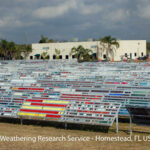
While design complexity is the most tangible driver of overall metal building project costs, the fine print of building codes could significantly impact a project’s bottom line.
Metal building systems can vary widely in cost due to several design and environmental factors. The complexity of the design, the size and precise span requirements of the structure, and the location of the construction site all factor into the cost of the building package. The more complex or elaborate a building design, the more construction services are required. The total acquisition cost of the building will always include labor considerations as well.
The dramatic impact that local building codes have on overall project costs is significantly less visible. Building codes provide minimum requirements for building design, construction, alteration, materials, maintenance, and performance. The primary purpose of building codes is to protect public health, safety, functionality, and welfare in the communities that adopt them. Municipalities and state-level government agencies set building codes, which contrast widely across the country based on each region’s geography, climate, population, and politics. Even within the same geographic area, building code requirements vary based on assumed occupancy and use of the structure. The severity of local climate events, coupled with the facility details, leads to increased capacity requirements, resulting in more steel material and a higher project cost.
Developing, approving, and enforcing building codes changes widely by jurisdiction and even more broadly worldwide. It is critical that local builders and property owners understand their local building codes and vet planned projects, including metal building systems, with their local permitting offices. This includes property zoning for specific purposes, as no assumptions about what is allowed can be made.
Here are some specific ways that building codes can affect the end cost of a building:
Snow loads
Building codes are sometimes euphemistically referred to as “codes and loads” because they define the performance of a building against the “load” of various natural influences, including snow. In the northern United States and higher altitude regions that typically receive higher snowfall amounts, roof pitches and more robust support structures may be required to handle the weight of the snow on the roof. Pitch and support structures can dramatically increase the cost of the building.
Wind loads
Fast-moving wind can create suction and downward forces on roofs, walls, canopies, and parapets. Ultimate wind speeds should always be clearly defined and provided to the building manufacturer for the positive and negative effects. This includes careful calculations and planning to ensure that the building is secured to the ground, the connection points of the various parts are adequate, and that the structure is optimally oriented on the property. Before placing an order, customers should review the wind exposure requirements published by the American Society for Civil Engineers (ASCE) to ensure the proper wind factors are considered in the design.
Fire codes
With a growing number of costly wildfires over the last several years, some states and regions require higher fire ratings for the exteriors of buildings. Other wildfire-prone regions feature incentives for property owners to build with more fire-resistant materials. This has encouraged people to consider metal buildings over wood structures and metal roofing over asphalt and wood alternatives. If the requirements are strict enough, it can demand the use of sandwich designs, which nestle insulation between single-skin sheeting or additional materials besides the metal substructure. This adds weight and installation complexity to the building, but also a higher assurance of longevity.
Exterior finishes
Some municipalities have standards regarding the look of buildings in their communities, including specifying the materials and colors used on exteriors. In some cases, a metal building will have to be faced in brick, stone, painted fiber, gypsum, cement options, tile, stucco, wood siding, and other surface treatments or design elements such as parapets, canopies, door options, and glass wall features. Customers must discuss these requirements with the system manufacturer during the quote stage since special deflection requirements must be used for these finishes to prevent premature weathering. This impacts the cost of a project because these requirements result in more steel being required. Even exterior signage or lighting requirements can add weight or additional integrations into the building design and construction. These alternatives need to be considered in the original design of the building as the weight and installation mechanics must be factored into the calculations for the foundation, as well as the primary and secondary framing structure.
These are just a few examples of how building codes can affect the cost of a metal building system.
Jennifer Davis serves as president of Central States Building Works, a leading provider of metal building systems, and chief market officer at Central States, a nationwide manufacturer of metal building products. With a deep background in manufacturing and marketing, Jennifer brings a visionary approach to building solutions and market development. Her leadership is marked by a commitment to innovation, collaboration, and elevating Central States Building Works’ brand presence in the industry.





